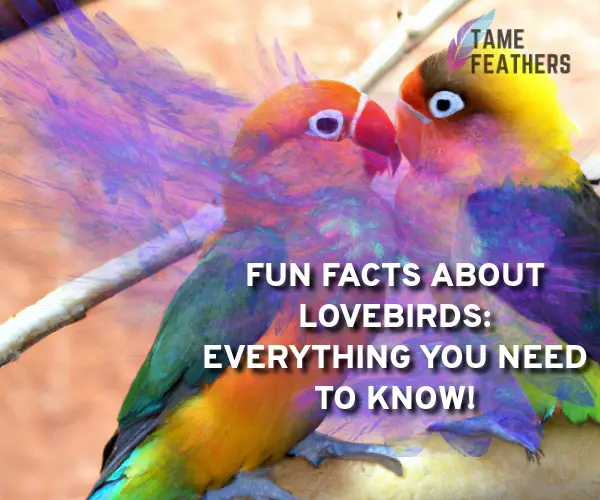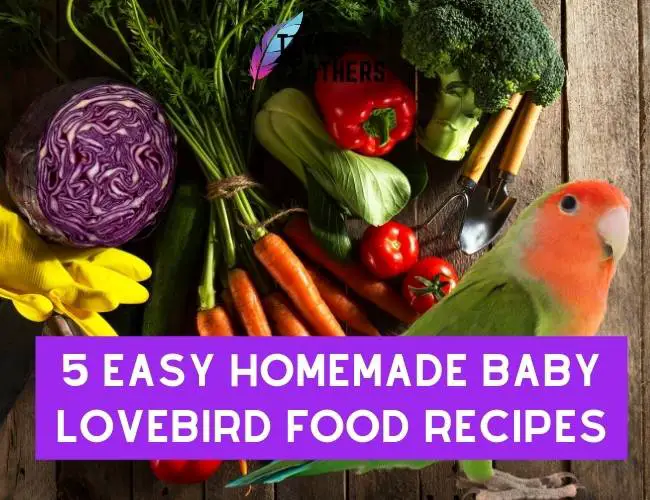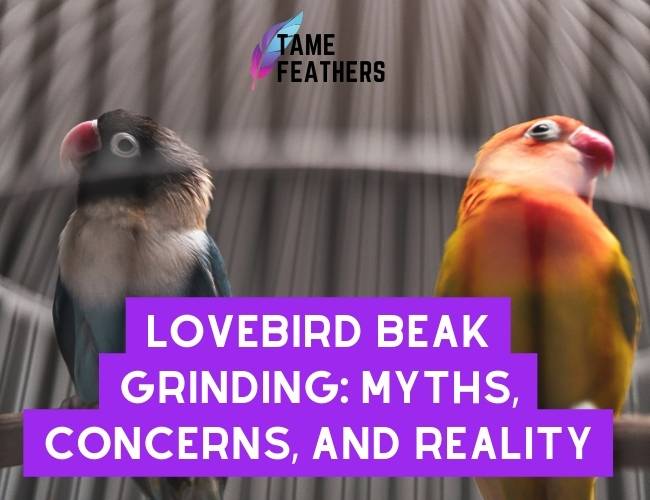Lovebirds Are Very Social
Lovebirds are very social animals, so if you’re looking for a pet that loves to be part of the family and get lots of attention, then this is definitely your bird! Lovebirds love to interact with their owners and enjoy playing games with them as well.They can even learn tricks like fetching or ringing bells.
Unlike some other birds, they don’t prefer to live alone; in fact, they thrive on companionship and need a companion bird in order to remain healthy.
If you want two lovebirds together, it’s important to introduce them slowly and carefully.
When introducing two birds that have never met before, start by putting them in separate cages side-by-side for a few days so that they can become used to each other’s presence without having any direct contact at first.
Once the lovebirds seem comfortable around each other from the cage side-by-side time period gradually move them closer together until finally letting them out into one large cage where they’ll be free to explore and play together safely! It’s also best not to keep just one single bird since they may become lonely or depressed due lack of interaction – leading them down an unhealthy path.
To ensure your lovebird stays happy always try providing plenty of toys such as ladders or swings inside its cage along with daily out-of-cage activities which will help keep their minds stimulated!
Lovebird Colors & Patterns
There are many different types of color combinations when it comes to Lovebirds – ranging from blues all the way through yellow greens too! The most common colors being green peach face (the typical look), mauve (which has hues such as pinkish purple) and blue/yellow combos (which often feature bright shades like turquoise).There are also special variations within these categories including albino (all white) cinnamon (lighter shade than normal green peach face) pieds (multi colored markings on feathers) lightbacks etcetera; all producing unique looks across various species within genus Agapornis – making it difficult for anyone who wants just ‘one kind’ but impossible not find something beautiful no matter what type chosen! The patterning seen on most wild Lovebird species is known as ‘barring’ which consists mainly black lines running vertically down their wings while others display stripes instead – both being quite eye catching against brighter shades found elsewhere amongst plumage e g belly chest neck head areas etcetera giving more depth colouration overall….
and let us not forget about those beloved facial masks either – adding yet another layer intricacy beauty wise!
Lovebird Lifespan
On average most Lovebird species live somewhere between 10–15 years depending upon care provided during life cycle but some reports suggest higher figures up 20+ year mark could possible too…so long we provide our feathered friends with proper diet exercise environment enrichment opportunities plus medical attention whenever needed then there really nothing stopping these little guys from living out nice long lives full happiness joy being spoiled rotten course 😉 !Dietary Needs Of A Lovebird
Like any animal – whether domesticated wild – dietary needs must met order stay healthy fit active happy throughout lifespan; same goes for our beloved avian pals too..
.
lovebirds require diets consisting seeds nuts fruits vegetables certain insects things occasionally small amounts pellet food supplement protein sources addition main staples mentioned earlier above make sure check labels avoid containing large quantities filler ingredients preservatives artificial flavorings colours etcetera might harm digestion wellbeing over time…also water bowls should kept filled fresh cleanliness sake whilst seed dishes refilled once day give birds enough energy sustenance last whole 24 hour period accordingly 🙂





